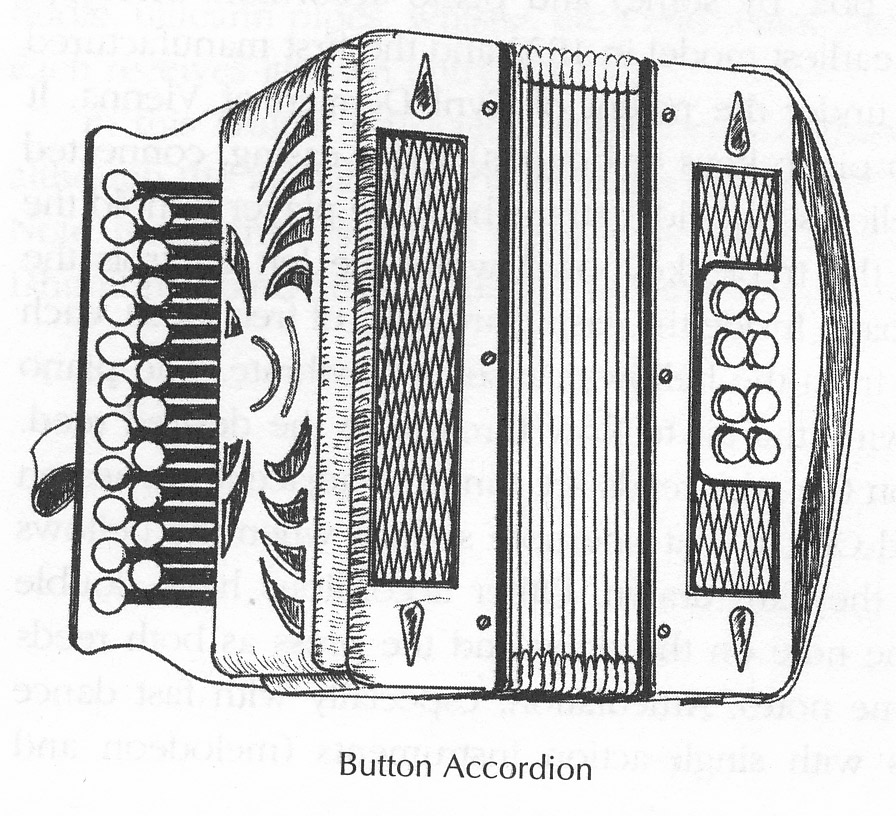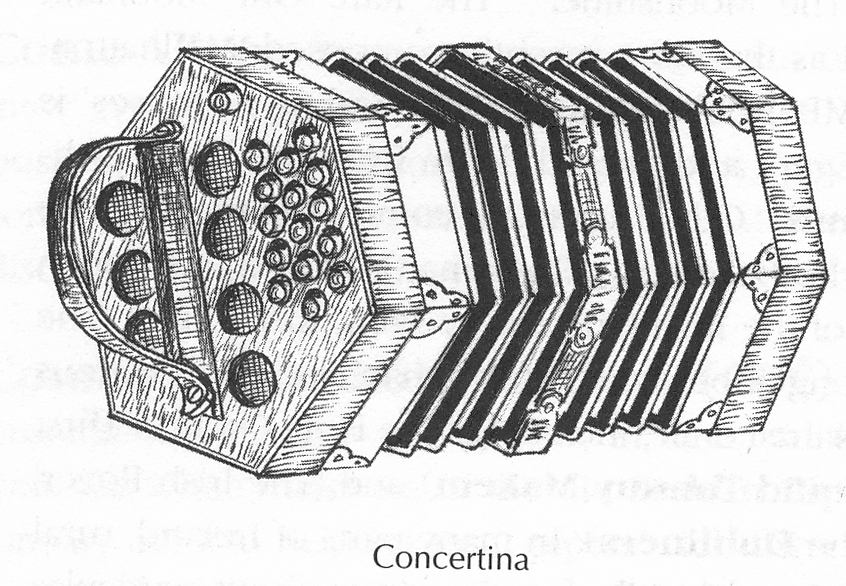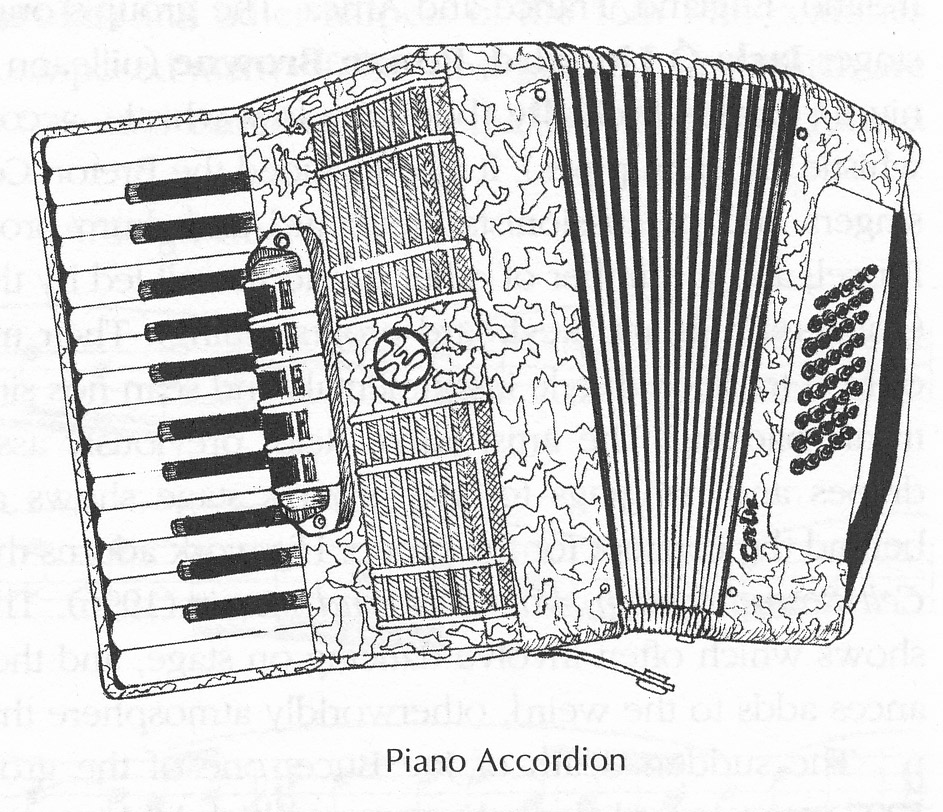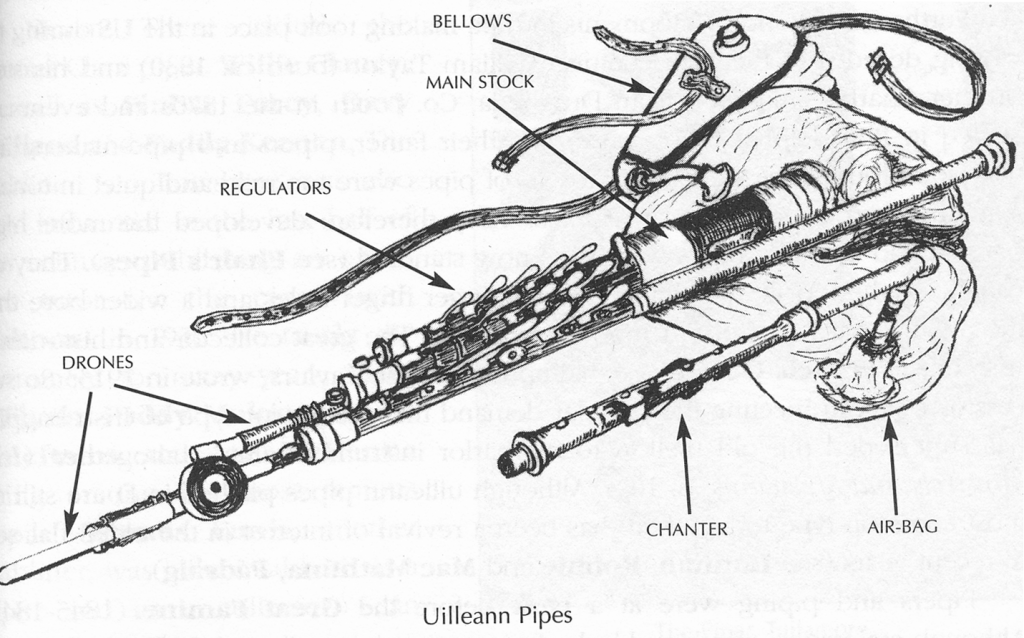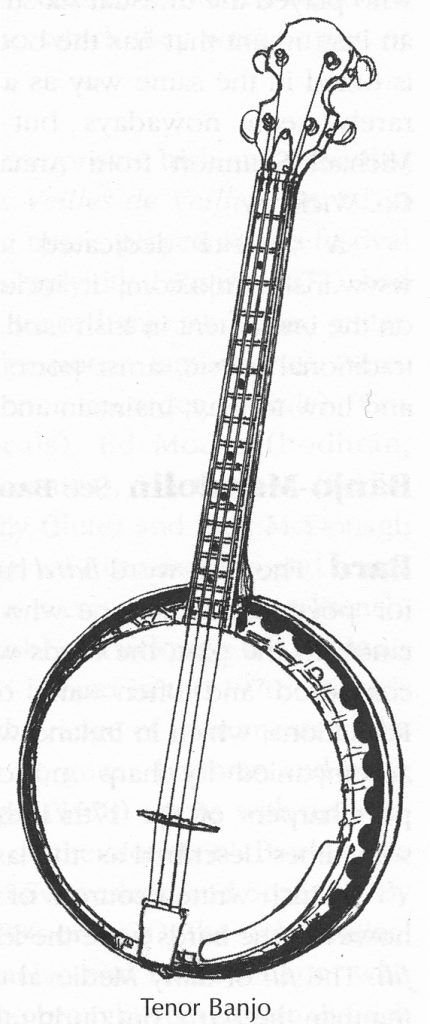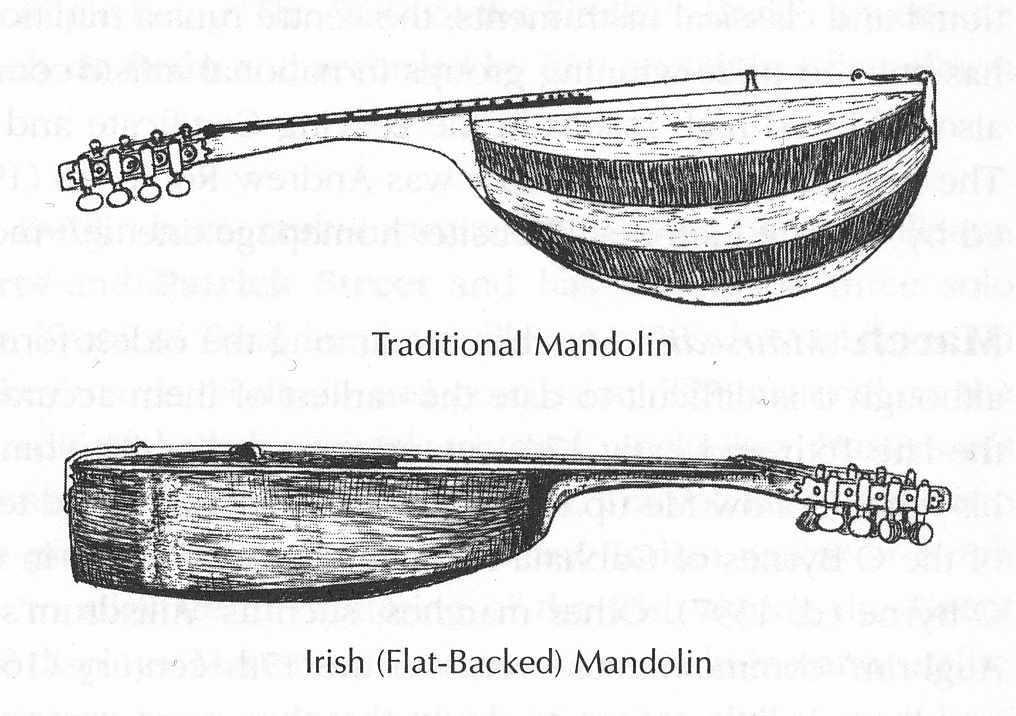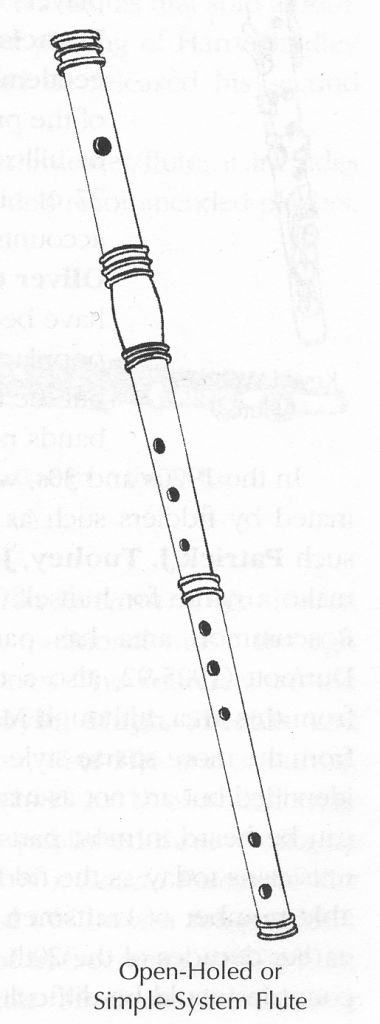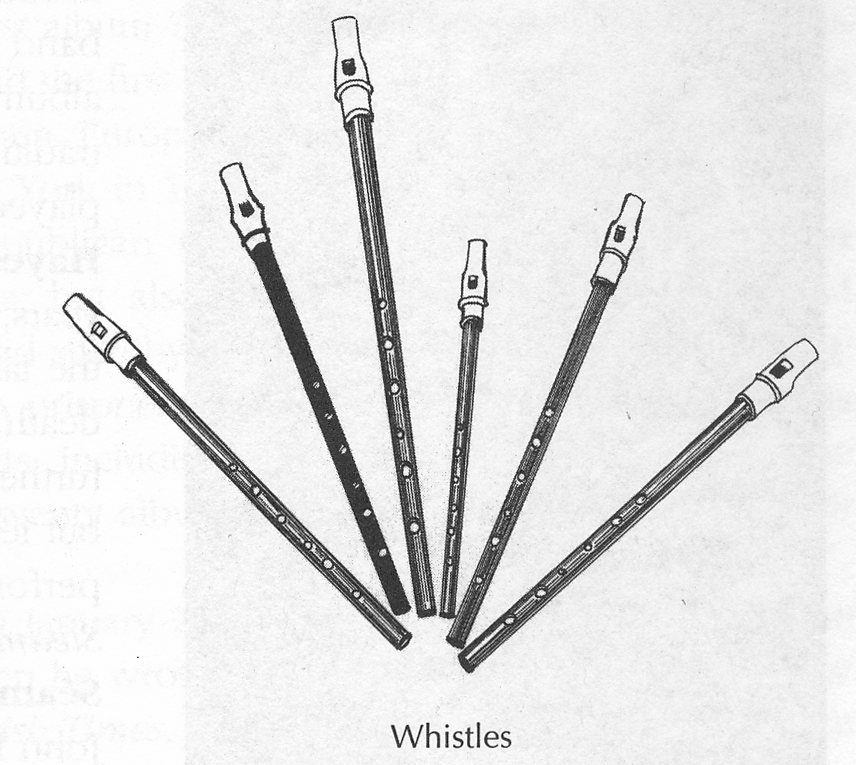Irish traditional music is an aural tradition. How ‘tunes’ are performed is handed down not through tutor methods, but by learning to play tunes and sitting in on ‘sessions’. “All to the good” as Maurice Walsh would say.
But, understanding how to compose for Irish Trad. music instruments for a Broadway show – and orchestrating that music for musicians to perform – is not as straightforward as it might appear.
The use of fiddles, bodhrán, uilleann pipes, whistles and Irish concertina – probably the most traditional group of instruments, whether singularly or in various combinations – is a unique sound world with its own rules, styles of playing (which changes geographically just to make it even more interesting) and with corresponding proponents of different style of ornamentation ‘cuts’, ‘crans’, ‘rolls’ etc.) and improvisation.
If we further add instruments like mandolins, bouzoukis, banjos and acoustic guitars – the use of the guitar being open to various levels of complaint in some quarters – which have been later additions to the trad. Irish sound world – it all starts to get quite involved.
So to help out those interested in what all these instruments look like and how they work (some of it is a bit technical admittedly) we have put together the following:
Accordions cairdin or bosca ceoil
One of the free-reed instruments played by traditional musicians in a variety of forms, including melodeon (called the ‘box`), button accordion (also called the `box` by some) and piano accordion.
It consists of a treble keyboard (with piano keys or buttons) and a casing, connected to a bass keyboard (buttons) by bellows. Shoulder straps help the player to hold the instrument. The right hand plays the treble keyboard while the left controls the bellows` movement and plays the bass, Inside the casing are pairs of free reeds, each producing a single note when air from the bellows causes it to vibrate. The piano keys or buttons open valves allowing the air to flow through to the desired reed.
Some accordions have single action (i.e., the reeds are tuned to adjacent pitches on the chromatic scale, such as C and C#), so that one note sounds when the bellows are pressed and the other when they are drawn. Other accordions have double action (i.e., they produce the same note on the draw and the press as both reeds of each pair are tuned to the same note).
Articulation, especially on fast dance tunes, is easier for most players with single-action instruments (melodeon and button accordion).
The Button Accordion is a single-action instrument similar to the melodeon, which it began to replace in the late 1920s. It has a second, outer row of keys pitched a semitone above the original notes. lt is fully chromatic and comes in a variety of pitches.
The C/C#. C/D and D/D# accordions were originally the most popular among traditional players but were replaced by the B/C instrument that involved a smoother legato style – especially since the 1950s. From the late 1970s, there has nonetheless been a revival of the more traditional style, often referred to as the ‘press and draw’ or ‘push and pull’, because it involves more bellows work than associated with the B/C accordion.
The Melodeon is a single-action button accordion with one row of buttons on the right-hand side and two spoon-shaped keys to provide the bass on the left-hand side.
The original melodeon was usually pitched in C and could sound twenty notes ranging over two diatonic octaves. It grew in popularity among traditional Irish musicians during the 1880s and 90s and its rise coincided with the decline of the uilleann pipes. The instrument was more readily available and easier to play and it was not likely to cause the problems posed for the piper by badly made reeds. It was also more suitable for the playing of the polkas, waltzes, mazurkas, flings and barndances that were popular at the time.
The B/ C accordion can be more difficult to manage than are C/C#, C#/D and D/D# accordions associated with the ‘press and draw’ style. In order to play in the key of D (the key in which most traditional music is played in sessions), the player has to use cross-fingering (playing on both rows), a problem which the `press and draw` player does not face.
The Concertina (Consairtín)
One of the free-reed instruments, in many ways similar to the accordion. The concertina was first patented by Charles Wheatstone in London in 1829 and arrived in Ireland during the second half of the 19th century.
Smaller than the accordion and hexagonal in shape, it also differs from the accordion in having no bass and that its keyboard is extended across the casing on both sides of the bellows.
There are two main types of concertina in use among Irish players today. The English concertina has double action (i.e., it produces the same note when the bellows is compressed as when it is extended).
The more common Anglo- or German concertina has single action (i.e., it produces a different note when the bellows is compressed to that which is produced when the bellows is extended).
The number of keys on a concertina can vary, but the instrument often consists of thirty keys or buttons arranged in six rows of five keys each.
There are three rows on the left-hand side and three on the right. The main row on each hand is often tuned in C and G, so cross-fingering is required to play the scale of D. Other systems of tuning, such as Ab/Eb and Bb/F, can also be found.
The concertina is a lighter and more portable instrument than most types of accordion. Fingering can be achieved without moving the basic position of the hands and the bellows’ work requires relatively little effort.
The tone of the concertina is light and sweet, and it blends well with other instruments such as uilleann pipes and fiddle.
It is not unusual to find concertina players who are also accomplished on the button accordion.
Piano Accordion has been popular with ceili bands for several decades.
Unlike the button accordion, it is a double-action instrument and thus produces the same note on the press as on the draw.
The double action makes it difficult to produce the necessary articulation for traditional music.
Uilleann Pipes (píb uilleann)
Referred to as ‘Irish bagpipes` or ‘union pipes until the early 20th century. In 1903 Grattan Flood first used the term ‘uilleann pipes’ (from the Irish word <em>uille</em>, meaning ‘elbow`), which only gradually became standard.
The instrument developed in Ireland in the early 18th century, gradually superseding the earlier mouth-blown bagpipes that had been played since medieval times.
A full set of modern uilleann pipes consists of bellows, bag. chanter, drones and regulators (see illustration). A beginner can start on a ‘practice set`, which comprises the bellows, bag and chanter only.
The drones can then be added to make up a ‘half-set’, with the addition of regulators making a ‘full set`. One reason for building up a set of pipes gradually like this is the complexity and difficulty of mastering the instrument. Another reason, in many cases, is the high price of the instrument. It can be more effective for learning, as well as more financially practical, to build up a full set of pipes over a number of years.
There are different tastes when it comes to deciding how best to use the drones and regulators. Two basic styles of piping can be distinguished: the staccato or close-fingering style and the legato or open-fingering style. In reality, most players use a combination of both styles, although close-fingering is often used for teaching beginners.
Uilleann pipes play in one sharp (F#) with the range from the D just above middle C to the A one and a half octaves above.
The Chanter
Any description of the instrument must begin with the chanter, which is fitted with a double reed (like that of an oboe) and sounds when air from the bag is supplied at the right pressure. This pressure is controlled by the player`s left elbow. The bag is supplied with air by the bellows, which is strapped to the player`s right arm just above the elbow.
The chanter has seven finger-holes in the front and a thumb hole at the back. It produces a range of two octaves, and the bottom note is usually tuned to D above middle C. In ‘flat sets’ the bottom note is tuned lower than D to C#, C, B or Bb.
Bottom chanter notes higher than D can also be found (Eb or E). Sometimes metal keys, which produce chromatic semitones, are also found on the chanter. For all except the bottom note, the chanter is closed off at its end by resting it on the knee. Many players use a ‘popping strap’, a piece of leather tied around the knee, to seal the end of the chanter more effectively.
The Bag
The bag into which the top of the chanter is fitted can be made of leather, plastic or rubber. The main stock through which the drones and regulators are supplied with air, is attached to the bag. A tube lying across the player’s midriff carries air from the bellows to the bag.
Drones
There are three drones: tenor, baritone and bass. The tenor drone is tuned to the same note as the bottom note on the chanter. The baritone is an octave below that and the bass a further octave below the baritone.
The drones are wooden pipes of cylindrical bore, each fitted with a single reed or quill. They sound continuously once they are switched on, but can he silenced by the use of a switch on the main stock.
There are also three regulators: tenor, baritone and bass. These are wooden pipes of conical bore with double reeds. Each regulator has four or five metal keys that produce individual notes when pressed.
The regulators are set up to enable the player to play simple dominant or tonic chords with the wrist or heel of the lower hand while the melody is played on the chanter.
Sometimes the fingers of a hand that is temporarily free of the chanter will play individual notes on the regulators.
The regulators are only sometimes used by solo players and are rarely heard in group situations as the chord progressions provided could clash with other accompanying instruments.
BANJO (bainseó)
Two types of banjo are used in Irish music: the tenor (usually four-string) banjo and the five-string banjo. Both evolved from a long-necked instrument with a gourd sound box brought by black slaves from West Africa to the Caribbean and then on to America.
In 17th-Century plantation America, this instrument was called the banjar, bangie, banza and other names. It gradually evolved to become (late 18th and early 19th centuries) the modern banjo, which has a body consisting of a round, shallow frame covered with parchment or skin on one side (plastic is often used today).
An Irish-American musician, Joel Walker Sweeney (b. 1810) played with the \/irginia Minstrels on their tour of England, Ireland and France in 1843-45 probably saw the introduction of the banjo into Ireland.
The earliest banjos were unfretted, but frets were added in 1878. The invention of steel strings at the turn of the century heralded changes in the way banjos were made and played.
Banjo players, influenced by the mandolin started to experiment with using a plectrum and tuning their instrument in fifths. Many players removed the short fifth string and eventually manufacturers started to produce four-string banjos. These were originally called ‘plectrum banjos` and, like the five-string, had 22 frets.
The tenor banjo was invented around 1915 and was also known as the tango, its rise coinciding with a craze for the Latin American dance in the US. It had a shorter neck (17-19 frets) and was played with a plectrum.
With only four strings and a shorter neck than the five-string instrument, it is more suitable for playing fast Irish dance tunes. It is usually tuned in fifths and, in Irish traditional music, the tuning g-d-a-e (an octave below the fiddle and mandolin) is commonly used.
The players of the early 20th Century used tenor banjos which were also tuned in fifths, but the tuning was higher, the top note being tuned to ‘b` or `c’ instead of `e`.
From the 1950s the tenor banjo was used in many Irish céilí bands. From this time the céilí bands also used the banjo-mandolin, a miniature banjo with eight strings (four pairs, with both strings of each pair tuned to the same note) similar in size and tuning to a mandolin. A six-string tenor banjo has also been played by some traditional musicians, but is quite rare.
MANDOLIN (maindilín)
A small, stringed instrument closely related to the lute. It has four pairs of strings tuned the same way as a fiddle (g-d-a-e). The mandolin is descended from the mandora, a 16thCentury lute and was first made in the 18th Century.
Mandolins of varying shapes and stringing were made in Italy in the 18th and 19th centuries, the Neapolitan type being the most common today. The original had a pear-shaped wooden body, a fretted neck and four pairs of steel strings played with a plectrum. The flat-backed mandolin is now probably more widely in use for Irish Traditional music performance.
BOUZOUKI
Member of a family of Near Eastern stringed instruments broadly classified as long lutes. They are all plectrum instruments with long necks and relatively small round-backed bodies and include the Turkish saz (or szaz) the Yugoslav tamborista, and the Arabic buxuk as well as the Greek bouzouki.
The design of the modern Greek bouzouki was much influenced by the 19th-century Italian mandolin. Like the mandolin, the most common type of Greek bouzouki has four double strings (tuned c-f-a-d), although many older style types have only three pairs of strings (tuned d-a-d).
Johnny Moynihan of Planxty is credited with introducing the bouzouki into traditional Irish music in the late l960s and two other members of the same group, Dónal Lunny and Andy Irvine, have been enormously influential in adapting the instrument to Irish music.
A flat-backed version, known as the Irish bouzouki, is now more common among Irish musicians. It is more solidly built than the Greek type, has a deeper tone and usually has eight strings, tuned in pairs.
Although the standard mandolin tunings (g-d-a-e) is sometimes used for playing melodies, tunings can vary according to the taste or requirements of the player. For accompanying, the g-d-a-d modal tuning often used on guitars when accompanying Irish traditional music, is often used.
The bouzouki has been very quickly adapted in design and tuning to suit Irish music and its rise to prominence illustrates how new instruments have brought new and complementary sounds to the music. It can be used either as a melody or accompanying instrument. In the latter role, many traditional musicians find it more suitable to Irish dance tunes, as it does not have as full a sound as the guitar and is less likely to obscure the melody.
Member of a family of Near Eastern stringed instruments broadly classified as long lutes. They are all plectrum instruments with long necks and relatively small round-backed bodies and include the Turkish saz (or szaz) the Yugoslav tamborista, and the Arabic buxuk as well as the Greek bouzouki.
The design of the modern Greek bouzouki was much influenced by the 19th-century Italian mandolin. Like the mandolin, the most common type of Greek bouzouki has four double strings (tuned c-f-a-d), although many older style types have only three pairs of strings (tuned d-a-d).
Johnny Moynihan of Planxty is credited with introducing the bouzouki into traditional Irish music in the late l960s and two other members of the same group, Dónal Lunny and Andy Irvine, have been enormously influential in adapting the instrument to Irish music.
A flat-backed version, known as the Irish bouzouki, is now more common among Irish musicians. It is more solidly built than the Greek type, has a deeper tone and usually has eight strings, tuned in pairs.
Although the standard mandolin tunings (g-d-a-e) is sometimes used for playing melodies, tunings can vary according to the taste or requirements of the player. For accompanying, the g-d-a-d modal tuning often used on guitars when accompanying Irish traditional music, is often used.
The bouzouki has been very quickly adapted in design and tuning to suit Irish music and its rise to prominence illustrates how new instruments have brought new and complementary sounds to the music. It can be used either as a melody or accompanying instrument. In the latter role, many traditional musicians find it more suitable to Irish dance tunes, as it does not have as full a sound as the guitar and is less likely to obscure the melody.
BODHRÁN
A shallow drum consisting of an animal skin (usually goat) stretched over a round wooden frame. It is held vertically with one hand while the other is used to beat the instrument, usually with a beater or stick.
Before the late 1950s the bodhrán was little used in traditional music, although with mummers and Wren-boys a type that often had metal plates like a tambourine was popular.
The widespread use of the bodhrán in traditional music today is due largely to the influence of Seán Ó Riada who preferred its sound to the snare-drum used by céilí bands at the time.
Although goatskin is most commonly used in the making of bodhráns, the skin of calves. sheep, dogs, deer, jennet and even buffalo has been used. Ó Riada believed that the bodhrán probably dated back to the Bronze Age or earlier, but the earliest written reference to it comes from the Medieval period.
A good player can get a great variety of rhythms from the instrument and can vary the tone by pressing one hand (or the fingers) against the back of the skin. Many players will also beat the stick on the wooden frame from time to time. Other means of varying the tone include beating with the hand as opposed to the stick and using different types of sticks or even brushes as beaters.
FIDDLE (fidil)
A four-string, bowed instrument, usually (although not invariably) tuned g-d-a-e. Traditional Irish musicians, like folk musicians in other parts of the world, use ‘fiddle’ as the name of the instrument which classical musicians call the violin.
The fiddle has been one of the most popular traditional instruments since the late 17th century, when the modern instrument became widespread in Ireland.
Earlier forms did exist throughout Europe, where neither the shape nor size of the medieval fiddle was standardised. lt was usually flat-backed and lacked the well-defined waist of the modern fiddle.
REGIONAL STYLES OF PLAYING:
Regional styles of fiddling in Irish Music tend to be quite marked and are usually defined in terms of bowing technique, ornamentation and rhythm. Some Donegal fiddlers often lean heavily on the bow, producing a loud, even harsh, tone where the rhythm tends to be quite evenly spaced with a more sparing use of ornamentation than in areas like Sligo. The Sligo style tends to be more flowing and ornamented, with the bowing generally slurred and the rhythm slightly accentuated. Complicated!
FLUTE (fliúit)
The most common type of flute in Irish traditional music today is the ‘simple-system’ wooden flute. This consists of a tube (plugged at one end and usually having a conical bore) with six finger-holes and an embouchure or mouth-hole.
Some wooden flutes have extra metal keys (in some cases up to eight) for accidental notes, but these are not necessary for most traditional tunes.
On the most common flute, where the lowest note is pitched to D, the player can obtain C by cross-fingering and F by half-covering the second hole from the bottom (similar techniques are used by players of the tin whistle and the low whistle). It is, therefore, possible to get any accidentals that might be required without having additional keys on the flute.
Indeed some flute-makers argue that the addition of metal keys takes away from the sound of the wooden flute. Hardwoods such as African blackwood, ebony, grenadilla or cocus are generally used. These flutes usually have a range of two octaves, although the classical, keyed flute, which has a range of three octaves, is sometimes used for playing traditional music. This type of flute, with padded keys over all the holes, is not as well suited to Irish traditional music as the simple-system flute.
LOW WHISTLE (feadog mhór)
An instrument like a large tin whistle which is most commonly found pitched in ‘D’, a full octave below a tin whistle. It uses the same fingering system and forms of ornamentation as the tin whistle. Low whistles began to be played in Irish traditional music in the 1960s.
WHISTLES | TIN WHISTLES (Feadóg)
Whistles of various types are found in most cultures, from ancient times to the present, and on every continent. In Ireland, the Brehon Laws mention whistle players as early as the 6th or 7th Century, and there are numerous references to them in the earliest Irish literature.
The earliest physical remains of whistles were found in Christchurch Place, Dublin. These date from the 15th Century and are made of bird bone.
The tin whistle is the most common type played in modern times, and is sometimes sold as a `flageolet’. The term derived from a fipple flute similar to a tin whistle that was known in Europe from the late 16th Century. It became popular in England and France in the 17th Century where it was used for playing classical music well into the 19th Century.
Most flageolets of this era, however, were more elaborate in design than the tin whistle and some even had keys instead of simple open holes.
Until recent decades, the English-made ‘Clarke’ tin whistle, first manufactured in 1843, was the standard type. Still played today, it consists of a cone-shaped piece of tin with a wooden fipple (a plug forming a flue) in the mouthpiece.
In the past 50 years cylindrical whistles made of brass (or nickel-plated brass) with plastic mouthpieces have become more common. The British-made ‘Generation’ was the first of this kind of whistle to be mass produced and Generation still make the widest variety of whistles in different pitches. Tin whistles are also made in Ireland now, most notably the Feadog (Irish for ‘whistle`) and ‘Waltons’ type. Waltons produce a variety of whistles with different tones by changing either the bore or the type of material used. American-made ‘Susato` plastic whistles are also becoming popular, although the tone is not as sweet as the ‘tin` whistle. Handmade wooden whistles can also be found.
Although a fingering chart for a complete chromatic scale often come with tin whistles, it is only by using half-covered holes that a player can play a chromatic scale.
On the most commonly used whistle, pitched in ‘D’, a player can also get C natural without using half-covered holes. A ‘G major’ scale could, thus, be played easily on a ‘D’ whistle and, similarly, whistles in other pitches can always be used to play in a second major scale without resorting to the use of half-covered holes.
A good player can produce a whole range of complex forms of ornamentation on the whistle in a manner similar to the flute. The standard range of the whistle is two octaves. For a D whistle, this includes notes from D5 to D7; that is, from the second D above middle C to the fourth D above middle C.
Ornamentation
Traditional whistle playing uses a number of ornaments to embellish the music, including cuts, strikes and rolls. Most playing is legato with ornaments to create breaks between notes, rather than tongued. The traditional music concept of the word “ornamentation” differs somewhat from that of European classical music in that ornaments are more commonly changes in how a note is articulated rather than the addition of separately-perceived notes to the piece.<span style=”font-size: small;”> </span>Common ornaments and articulations include:
Cuts
Cuts are very briefly lifting a finger above the note being sounded without interrupting airflow into the whistle. For example, a player playing a low D on a D whistle can cut the note by very briefly lifting the first finger of his or her lower hand. This causes the pitch to briefly shift upward. The cut can be performed either at the very start of the note or after the note has begun to sound; some people call the latter a “double cut” or a “mid-note cut.”
Strikes
<em>Strikes</em> or <em>taps</em> are similar to cuts except that a finger below the sounded note is briefly lowered to the whistle. For example, if a player is playing a low E on a D whistle the player could tap by quickly lowering and raising his or her bottom finger. Both cuts and taps are essentially instantaneous; the listener should not perceive them as separate notes.
Rolls
A roll is a note with first a cut and then a strike. Alternatively, a roll can be considered as a group of notes of identical pitch and duration with different articulations.[25] There are two common types of rolls:
- The long roll is a group of three slurred notes of equal pitch and duration, the first sounded without a cut or strike.
- The short roll is a group of 2 slurred notes of equal pitch and duration, the first sounded with a cut and the second sounded with a strike.
Cranns
Cranns (or crans) are ornaments borrowed from the Uilleann piping tradition. They are similar to rolls except that only cuts are used, not taps or strikes. On the tin whistle they are generally only used for notes where a roll is impossible, such as the lowest note of the instrument.
Slides
Slides are similar to portamentos in classical music; a note below or above (usually below) the intended note is fingered, and then the fingering is gradually shifted in order to smoothly raise or lower the pitch to the intended note. The slide is generally a longer duration ornament than, for example, the cut or the tap and the listener should perceive the pitch changing.
Tonguing
Tonguing is used sparingly as a means of emphasizing certain notes, such as the first note in a tune. Tin whistle players usually do not tongue most notes. To tongue a note a player briefly touches their tongue to the front of the roof of the mouth at the start of the note (as if articulating a ‘t’), creating a percussive attack.
Vibrato
Vibrato can be achieved on most notes by opening and closing one of the open holes, or by variation of breath pressure (this last is actually both vibrato (pitch modulation), and tremolo (amplitude modulation)). Of the two, fingered (i.e., true) vibrato is much more common than diaphragmatic (breath) vibrato (i.e., tremolo), except on notes like the lowest note on the whistle where fingered vibrato is much more difficult. A common method of achieving vibrato is to finger a note, and then quickly flick a finger on and off, not the hole below the fingered note, but the hole two below the fingered note, leaving an open hole in between.
